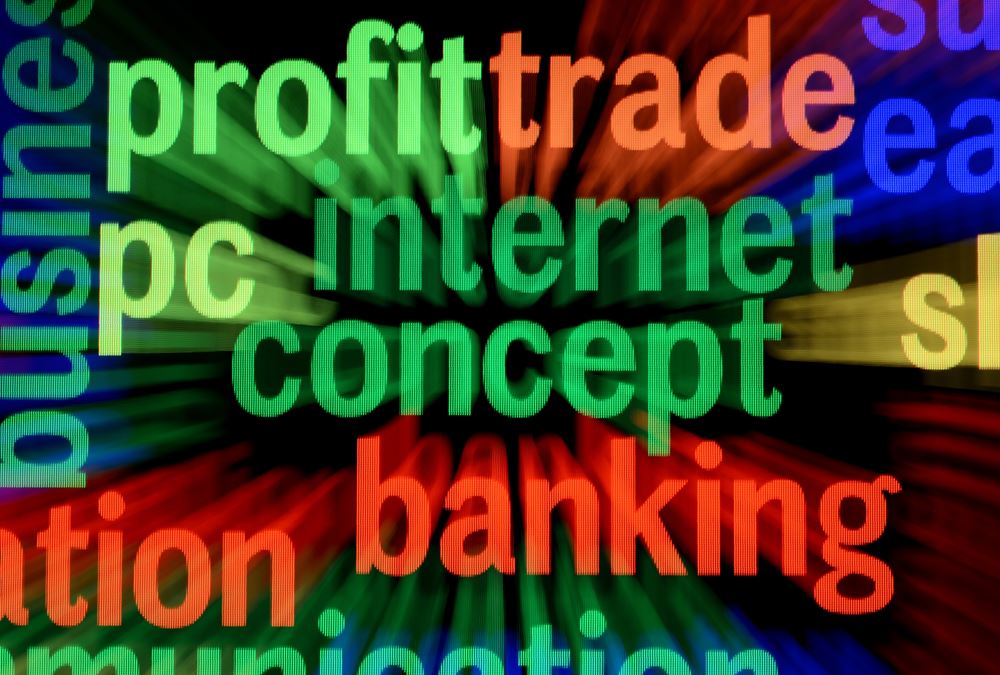- Home
- Business Processes
- Industry Knowledge
- Aerospace Industry
- Automotive Industry
- Banking Domain
- BFSI Industry
- Consumer/ FMCG Industry
- Chemicals Industry
- Engineering & Construction
- Energy Industry
- Education Domain
- Finance Domain
- Hospitality Domain
- Healthcare Industry
- Insurance Domain
- Retail Industry
- Travel and Tourism Domain
- Telecom Industry
- Leadership Skills
- eLearning
- Home
- Industry Knowledge
- BFSI Industry
- BFSI Industry Overview
BFSI Industry Overview
BFSI is an acronym for Banking, Financial Services, and Insurance and popular as an industry term for companies that provide a range of such products/services and is commonly used by IT/ITES/BPO companies and technical/professional services firms that manage data processing, application testing, and software development activities in this domain. Banking may include core banking, retail, private, corporate, investment, cards, and the like. Financial Services may include stock-broking, payment gateways, mutual funds, etc. The insurance covers both life and non-life.
What is the BFSI Industry?
Technology is allowing the BFSI industry to reach out to new markets and offer novel products and services through efficient delivery channels. On the other hand, data security and availability of information updates is critical to the banking and insurance business, mandating high network uptime, rapid fault detection, and quick problem resolution. The banking and financial industry is also challenged by a large number of existing legacy systems in its infrastructure. The vertical thus has a unique set of requirements and challenges and this section discusses them in detail.
This section provides an overview of the BFSI domain and is designed to help learners understand key concepts, terminology, issues, and challenges associated with the BFSI Industry, and strategies employed to meet some of those challenges. It will identify the main sectors of the BFSI industry and its business drivers, and review the key aspects of the industry business model, its competitive environment, and the current trends in the industry. Banking, Financial Services, and Insurance (BFSI Domain) section help learners build strong domain competencies and learn some of the industry best practices spanning Retail Banking, Corporate Banking, Insurance, and Capital markets.
Some Segments of the BFSI Industry:
- Cards
- Banking Technology
- Depository/Registry
- Custody
- Reconciliations
- Retail Banking
- Investment Banking
- Risk and Compliance
- Surveillance
- Corporate Banking
- Wealth Management
- Exchanges/Trading/Broker-Dealer
- Clearing/CCP
- Life Insurance
- General Insurance
- Reinsurance
Related Links
You May Also Like
-
Definition of Bank: Meaning of the term Bank and the Business of Banking
What do we mean by the word bank? How did the word bank originate? What is the most simple and concise definition of a bank that explains the fundamentals of the banking process? Does the definition of banking vary from country to country? What are the key differentiators between any other business and a Bank? Get answers to all these questions and explore the basics of bank and banking as an industry.
-
History of Banking: Evolution of Banking as an Industry
Banking is one of the oldest industries and banking in the form that we know of began at about 2000BC of the ancient world. It started with merchants making grain loans to farmers and traders while carrying goods between cities. Since then, the banking industry has evolved from a simplistic barter system and gift economies of earlier times to modern complex, globalized, technology-driven, and internet-based e-banking model. In this article, we will take you through the major events and developments in the history of the banking industry.
-
History of Banking: Famous Banks from the Past
Seven hundred years ago a bank was established in Venice, which made transactions resembling modern banking. In 1407, another bank was founded in Italy under the name of Banco di San Giorgio which was one of the oldest chartered banks in Europe. Sveriges Riksbank (Riksbanken), is the central bank of Sweden and the world's oldest central bank. The Bank of England is the second oldest central bank in the world, and most modern central banks have been based on that model. Let us explore some interesting events as we learn more about these early banking institutions.
-
History of Banking: The Gold Standard & Fractional Reserve Banking
Gold has always been considered as a safe economic investment and treated like a currency. All of the economically advanced countries of the world were on the gold standard for a relatively brief time. Under a gold standard, the value of a unit of currency, such as a dollar, is defined in terms of a fixed weight of gold and banknotes or other paper money are convertible into gold accordingly. Explore the fascinating history of the gold standard through the lens of history and also learn why banks hold back a certain fraction of deposits as reserves.
-
Overview of Banking Industry: The Industry Basics
Banks play a key role in the entire financial system by mobilizing deposits from households spread across the nation and making these funds available for investment, either by lending or buying securities. Today the banking industry has become an integral part of any nation’s economic progress and is critical for the financial wellbeing of individuals, businesses, nations, and the entire globe. In this article, we will provide an overview of key industry concepts, main sectors, and key aspects of the banking industry’s business model and trends.
-
Banking Sector, Segments & It's Classifications
The banking industry players deal in a variety of products from savings accounts to loans and mortgages, offer various services from check cashing to underwriting, caters to different types of customers from individuals to large corporates, serve diverse geographies from rural villages to cross-border operations. Thus the banking industry is made up of several types of banks, with their own objectives, roles, and functions. In this article, we will explore the various sectors, segments, and classifications of banking based on parameters like products, customers, types, etc.
-
Type of Banks: Different Types of Banks in India & their Functions
This article explains the banking structure in India and how different banks are classified as per RBI Norms. The Indian banking industry has been divided into two parts, organized and unorganized sectors. The organized sector consists of Reserve Bank of India, Commercial Banks and Co-operative Banks, and Specialized Financial Institutions (IDBI, ICICI, IFC, etc.). The unorganized sector, which is not homogeneous, is largely made up of money lenders and indigenous bankers. Learn what we mean by nationalized banks, scheduled banks, public sector banks, private banks, and foreign banks.
-
Types of Banks: Different Banks & their Classifications (Global)
The banking industry caters to various sections of society thus the focus of banking becomes varied, catering to the diverse needs of clients through different products, services, and methods. To meet this, we need distinctive kinds of banks addressing complex business & social needs. In this article, we will explain various types of banking institutions ranging from retail banks, commercial banks, co-operative banks, investment banks, central banks to various other types of specialized banks.
-
Banking Operations: Understanding Various Transactions & Activities
Banks perform a variety of operations ranging from basic or primary functions like day to day transactions at a branch to others that maybe the agency or general utility services in nature. The transactions that are incidental to revenue/sales or sustaining the business are an important element of the banking industry value chain. In this article, we will look at the key operations performed in the course of banking.
-
Banking Industry Business Model - Understanding How the Banking System Works
Banks are commercial profitable institutions and need to increase their business, grow their revenue, and provide returns to their owners. Unlike other stores and shops, banks are providing services rather than selling their products. Learn how banks get their funds and how they make money on services. Read more to learn how the banks earn their profit!
-
Banking Industry Value Chain - Economic Benefits of Banking
Banks and other institutions play this critical role by performing services essential to the functioning of an economy. Safeguarding, transferring, lending, and exchanging money in various forms, along with evaluating the credit-worthiness of customers, are the main functions that banks perform. Learn more about the role that banks play in shaping economies, their importance in the modern, global economy, and why they are important for nations as a whole.
-
Banking Industry Value Chain - Understanding Customers of Banks
To understand the business model and value chain of any industry, it is very important to understand the customer profile for the products and services being offered. Modern banking industry caters to different types of customers ranging from individuals to large corporates; serve diverse geographies from rural villages to cross border international operations, utilizes various banking channels like branch network and e-banking. In this article, we will help you understand the diverse customer base that will help you to understand the value chain.
-
Banking Industry Value Chain: Basic Functions in Banking
Banks are commercial institutions and need to increase their business. Unlike other stores and shops, banks are selling services rather than products. Learn how banks get their funds and how they make money on services. Banks and other institutions play this critical role by performing services essential to the functioning of an economy. Safeguarding, transferring, lending, and exchanging money in various forms, along with evaluating credit-worthiness of customers, are the main functions that banks perform. Learn more about the role that banks play in shaping the economy.
-
Banking Industry Value Chain: Decoding Bank's Balance sheet
Banking is a unique business and banks are a very important institution to the efficient functioning of the financial system. What are the various components of the banks balance sheet? What are the different assets and liabilities in their balance sheet? Deposits are assets for anyone investing it, but how deposits accepted by a bank are represented in Bank's balance sheet? Explore answers to these questions and understand the significance of items that are generally part of the balance sheet of a commercial bank. Understand the business model of commercial banking from an accountant’s perspective.
-
Banking Industry Value Chain: How Banks Earn Profit?
Banks are commercial institutions and like any other for-profit commercial venture, aim to increase their profits by expanding the business. Unlike other stores and shops, banks are selling services rather than products. Banking is a unique business model, and banks have various sources of income like interest spread, commissions, fees, and other revenues. Learn how banks get their funds and how they make money on services. In this article, we look more closely at how banks do business and how they earn profits and explore the value chain of the banking industry.
-
Banking Operations: Different Types of Payments & Payment Systems
Everyday people trade goods use services and need to make payments using cash as cash money is the major medium of exchange. Banks have developed various payment methods to facilitate the exchange of money that stimulates the growth of commerce, helps economic development and facilitates flexibility with lower transaction costs with security. Various payment systems exist today, ranging from cheque, wire transfer, cards to online transfer. In this article, we will discuss different types of payment methods that are available today with banking channels.
-
Banking Operations: Understanding Modern Banking Products
Banking has changed radically in the last 20 years, and it is now one of the most competitive businesses in the world. Like any business, a bank must attract customers in order to make money. There is an ever-wider array of services that are offered by the banking industry today. Technology has impacted the banking industry and changed the way it used to operate. With changing times, banks are also offering new innovative products to meet the dynamic evolving needs of its customers. Learn about various banking products and services.
-
Banking Operations: Understanding the Regulatory Framework
When a bank fails, the depositors suffer as much or more than the bank’s owners. Failure of one large bank can trigger losses across the boundaries of nations. This makes the banking industry an excellent candidate for government regulations. Bank’s lending policy directly impacts the economy, especially during economic downswing & upswings. Acting overly cautious, they restrict funds availability, and taking more risks can create the inflationary boom. Let us explore various banking regulations and how they safeguard our interests as consumers.
-
BFSI is an acronym for Banking, Financial Services, and Insurance and popular as an industry term for companies that provide a range of such products/services and is commonly used by IT/ITES/BPO companies and technical/professional services firms that manage data processing, application testing, and software development activities in this domain. Banking may include core banking, retail, private, corporate, investment, cards, and the like. Financial Services may include stock-broking, payment gateways, mutual funds, etc. The insurance covers both life and non-life.
-
Case Studies & Challenging Projects in Banking Domain
Some good examples of real business projects with high business impact in banking domain. Helps the learner to understand how to create a well-defined project, with clear deliverables providing great learning experience. Short and precise structured output with good use of project management tools
-
Changes in the banking landscape and impact on country specific strategy
This paper deals with the formulation of a country-specific strategy for any banking company. How to identify the most challenging issues; understand the impact of recent economic and political trends on banking business in general. The paper gives a brief review of recent banking trends to focus on while devising the strategy and how to clarify the major competitive forces and main issues of the banking environment in the targeted country.
-
Compliance/Regulatory Risk – Example - Basel III
Basel III is an internationally agreed set of measures developed by the Basel Committee on Banking Supervision in response to the financial crisis of 2007-09. The measures aim to strengthen the regulation, supervision, and risk management of banks. Basel III standards are minimum requirements that apply to internationally active banks. Members are committed to implementing and applying standards in their jurisdictions within the time frame established by the Committee. Understand the key considerations of Basel III for a banking institution.
-
A financial asset is a financial claim, an intangible asset that derives value because of a contractual claim. Learn about financial assets and the role the banking industry plays in the financial assets market. Learn about various types of financial assets and their importance in terms of the banking industry.
-
Learn what we mean by financial institutions and financial intermediaries. Learn the two main classifications of financial institutions and understand the significant distinction between depository and non-depository financial institutions. Learn how the financial system works and understand the concept of financial markets.
-
Financial Intermediaries – Depository
Depository intermediaries receive deposits from customers and use the money to run their businesses. These institutions may have other sources of income, but the bread and butter of their business are handling deposits, paying interest on them, and lending money based on those deposits.
-
Financial Intermediaries – Non-Depository
As the name suggests, non-depository intermediaries don't take deposits. Instead, they perform other financial services and collect fees for them as their primary means of business. Learn more about various types of non-depository financial intermediaries and how they work.
-
A financial market is a market in which people trade financial securities and derivatives at low transaction costs. A financial market is a word that describes a marketplace where bonds, equity, securities, currencies are traded. It includes stock markets, indices futures, commodities, and financial futures. Financial markets exist to bring people together so money flows to where it is needed most. Learn what we mean by financial markets and why we at all need them? Understand the major benefits provided by these markets and see some examples of various types of financial markets. Understand the difference between primary and secondary markets.
-
Identifying growth opportunities in Islamic finance
Islamic finance is available in 56 countries through 1,389 sharia-compliant companies that have total assets under management (AUM) of $2.4 trillion, according to a 2018 study from Thomson Reuters. This article explores how to improve and explore the products, structures, and executions of Islamic Financing in line with the global trend in the financial sector.
-
Impact of Social Media in Banking
The high distribution of social media in the private environment drives banks to deal with the application possibilities, opportunities as well as threats posed by social media. Social media marketing has increased due to the growing active user rates on social media sites. As social networking becomes more popular among older and younger generations it becomes imperative for banks to understand the opportunities and potential threats from Social Media.
-
Insurance policies are a safeguard against the uncertainties of life. Insurance policy helps in not only mitigating risks but also provides a financial cushion against adverse financial burdens suffered. From a macro perspective Insurance industry turns capital accumulates as premiums into productive investments thereby promoting trade and commerce activities which result in the sustainable economic growth of the economy.
-
Introduction to Banking: What is a Bank?
When you think of a bank, what image comes to mind? A bank is a financial intermediary for the safeguarding, transferring, exchanging, or lending of money. Banks distribute “money” - the medium of exchange. A bank is a business and banks sell their services to earn money, and they need to market and manage those services in a competitive field. Learn more about the fundamentals of banking.
-
Key Services of the Financial System
In this article, we will consider the key services provided by the banks, insurance companies, mutual funds, stockbrokers, and the other financial services firms that make up the financial system. The firms in this sector, which make different financial assets and financial liabilities more or less attractive to individual investors and borrowers, offer different services.
-
Migrating banking customers to digital channels
As banks are moving to new digital channels like the internet banking and mobile banking applications, they’re able to offer better customer engagement while lowering their operational costs. The modern-day customers are inclining towards the online banking channels more than ever. Still, for large traditional banks the penetration of customer based to online banking is still very low. This article discusses strategies adopted to overcome this problem.
-
"Finance Domain” term is generally used to refer to the skills and jobs that fall under the finance industry or financial services. There is a potential source of confusion regarding what we refer to with the term Finance Domain. On the one hand, there is a function called finance that is common to all business enterprises, in every industry, and on the other hand, we have financial institutions. The knowledge of the finance domain enables possible career paths within the financial services industry or with financial institutions.
-
The insurance industry comprises companies and people who develop insurance policies and sell, administrate, and regulate them. Insurance is a means of protection from financial loss. It is a form of risk management primarily used to hedge against the risk of a contingent, uncertain loss. The insurance Industry manages the risk to people and businesses from the dangers of their current circumstances. Insurance policies are a safeguard against the uncertainties of life.
-
Parties in the Contract of Insurance
There are two parties in the contract of Insurance. Understand these parties and their definition in the contract of insurance. Learners will learn about the key stakeholders in the insurance business along with a classification of internal and external stakeholders.
-
This article helps the student to understand the legal principles and provisions of the insurance law. Starting with the fundamentals from which law is derived, this article helps the student to understand the salient aspects of any insurance contract, the rights and obligations of parties to the contract, and the legal environment within which insurance practice is carried out. Explore the seven most important principles of insurance.
-
Real life examples of challenges in banking industry & strategies adopted for success
Along with the banking industry’s digital transformation, comes significant challenges in the operational model as well as customer and business strategy to remain competitive. Given in this article are few of the real-life challenges faced by banks, and the strategies adopted by the banks to succeed in the coming year and mitigate the risk posed by these challenges. Overcoming these challenges is not easy and the transition from legacy systems to innovative solutions requires various coordinated steps to survive but thrive in the current landscape.
-
The insurance industry classifies the different products it offers by sector. The insurance sector is made up of companies that offer risk management in the form of insurance contracts. There are four main insurance sectors: Life & Health Insurance Industry, General Insurance Industry, Specialty Insurance Industry & Reinsurance Industry. This article describes the current insurance industry sectors and their associated activities, products, and services.
-
Technology Risk – Example Banking IT
As per a recent study, on an average bank spends 10% of its revenue on IT Costs. IT and IT cost structure play a decisive role in the performance of any bank. This article examines the challenges around ensuring the effectiveness and efficiency of IT Spend. How to ensure that spending on IT translates into increased operational efficiency. Banks face greater risk if there is a misalignment between business and IT strategies. Technology risk holds strategic, financial, operational, regulatory, and reputational implications
-
The Business Model of Insurance Industry
The insurance industry business model can be further categorized into two types of main activities, service domain, and support domain. Service domain activities make up the company's value chain and the support domain provides the infrastructure and support to sustain the value chain. Support activities may include corporate services, finance, human resources, or information systems, and technology.
-
The Opportunity of E-signatures in Banking
An electronic signature also called e-signature refers to data in electronic form, which is logically associated with other data in electronic form and which is used by the signatory to sign the document. The legal standing of this type of signature depends upon adherence to the exact requirements of the specific regulation under which it was created. If allowed, it could replace a handwritten signature. E-signature may find a lot of usage and acceptance in banking because of convenience, security, and business continuity. Read more to understand challenges around using e-signature in banking and some ideas to effectively use this technology.
-
Banking today is an exciting, fast-moving, around-the-clock, global activity. Changes in regulation, changes in technology, and changes in the competition have pushed banking, to become dynamic organizations that must respond rapidly to changing business circumstances. The advent of private sector banks, the rapid pace of globalization, emerging disruptive technologies are changing the dynamics of the banking industry as well as the competitive landscape. Read about some recent trends in the banking industry.
-
Insurance is categorized based on risk, type, and hazards. Logically, any risk that can be quantified can potentially be insured. Understand the importance of insurance and the different types of insurances like Life Insurance or Personal Insurance, Property Insurance, Marine Insurance, Fire Insurance, Liability Insurance, Guarantee Insurance.
-
What is Business? The Key Features of Business
In our day-to-day life, we use words like business, commerce, occupation, trade, industry, etc. quite often. These words have a definite meaning in the 'Business Organization'. After studying this article you should be able to identify the broad categories of human activities and describe what we mean by business and what are the features and objectives of the business. We will also classify the business activities and will explain the nature of the business organization. Read more to know what business is!
-
What is Finance? Meaning, Definition & Features of Finance
Finance is the science around the management of money. Finance encompasses banking, credit, investments, assets, and liabilities. The finance function encompasses a variety of functions, activities, and processes. Finance also consists of financial systems. Acquisition, allocation, utilization, and channelizing the funds to maximize the shareholder's wealth. Finance includes public, personal, and corporate finance.
-
What is General Insurance Industry?
General Insurance industry providers perform an essential function in today's economy. General insurance is typically defined as any insurance that is not determined to be life insurance. Depending on the type of occupation, risk exposure, and the money involved, the insurance could be different for each industry or business. In underwriting insurance policies, general insurers earn premiums that they further invest.
-
What is Life & Health Insurance Industry?
Insurers in this industry directly underwrite insurance policies relating to life, health, accident, and medical risks. Life and annuity insurance covers not only life and annuities but also health and disability. Read more about the health and life insurance industry. Life and health insurers generate revenue not only through the specific activity of insurance underwriting but also by investing premiums.
-
A primary insurer purchases reinsurance to limit its exposure, usually to one specific type of risk, thereby diversifying its book of risk. Businesses in this industry focus on assuming all or part of the risk associated with existing insurance policies originally underwritten by direct insurance carriers. In other words, the primary activity of this industry is insuring insurance companies. Reinsurance occurs when multiple insurance companies share risk by purchasing insurance policies from other insurers.
-
What is Stock Exchange? Meaning Definition and Features
A stock exchange or securities market is a place where trading in securities takes place. Read this article to learn the meaning, features, and functions of stock exchanges and understand the importance of stock exchanges and methods of trading on stock exchanges. After taking this lesson, the learner will be able to explain the meaning and importance of stock exchange and state the economic functions of stock exchanges.
Explore Our Free Training Articles or
Sign Up to Start With Our eLearning Courses

About Us
Learning
© 2023 TechnoFunc, All Rights Reserved











































